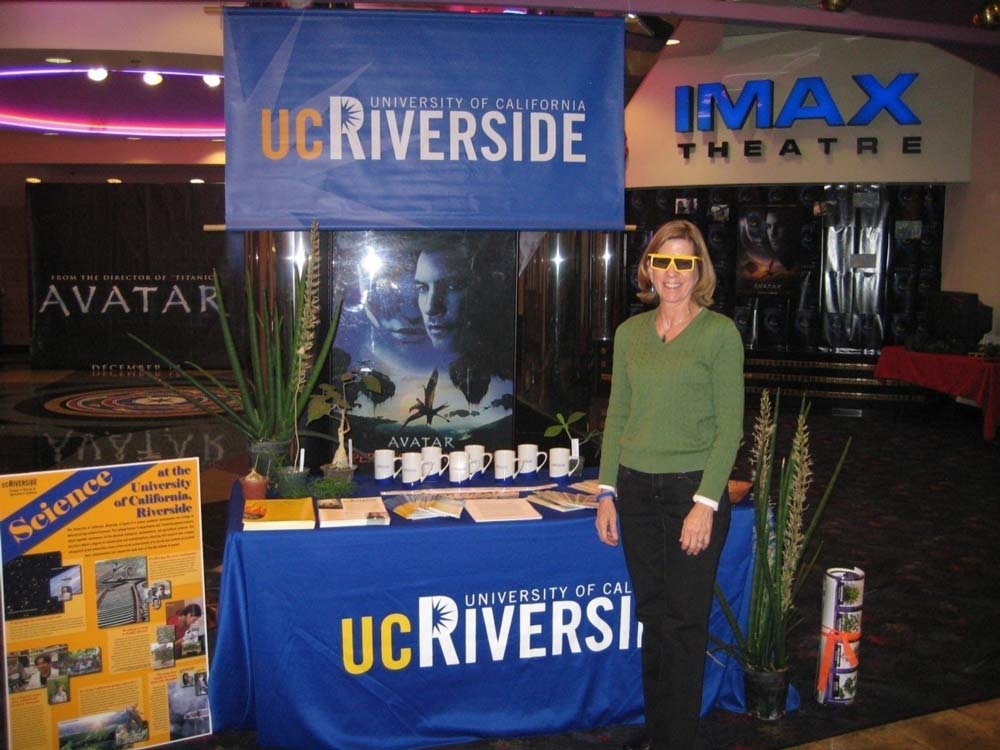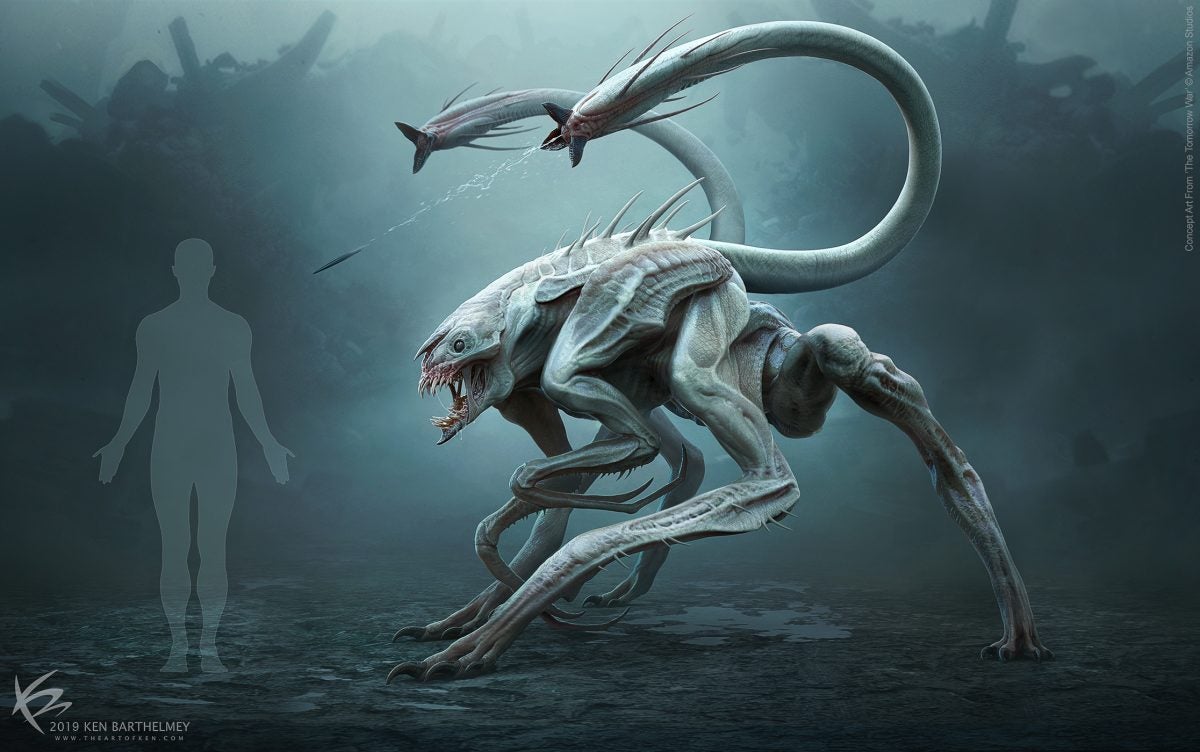University of California, Riverside
The Science of Cinema
Even the most fantastical films require the expertise of Earth-bound scientists to create compelling worlds and characters. Here, UCR researchers share how they helped make it possible for viewers to believe in movie magic.
A udiences gasped out loud when Darth Vader revealed he’s Luke Skywalker’s father in “The Empire Strikes Back.” They screamed when a tiny monster emerged from an astronaut’s chest in “Alien.” Who among us didn’t shed a tear when Ellie died during the opening scene of “Up,” leaving a heartbroken Carl alone to mourn her?
Though all these moments are wholly fabricated, careful attention to detail has allowed millions to suspend the knowledge that what they’re watching isn’t real and just enjoy the show. Here are several examples of when UCR scientists loaned their knowledge to make some big-budget stories much more believable.
Botany on the Big Screen
Among the creative minds behind the multiple Academy Award-winning blockbuster “Avatar,” one of the highest grossing movies of all time, was a UCR botanist. The 2009 film, which earned a worldwide box-office gross of over $2.9 billion, featured blue-skinned humanoids living in harmony with nature on Pandora, a lush moon in another star system.
Holt’s work on “Avatar” helped inform Sigourney Weaver’s role as botanist Grace Augustine. (20th Century Fox)
Jodie Holt, professor emeritus in UCR’s Department of Botany and Plant Sciences, helped bring Pandora to life by writing descriptions of the moon’s many plants. The descriptions included Latin names she made up using the correct rules of nomenclature, as well as information about ecology and ethnobotany — the study of how people in a particular region use indigenous plants. The result is a “Pandorapedia” included in games and a book based on the film.
Holt’s “Pandorapedia” is included in games and a book based on “Avatar.” (Ubisoft/HarperCollins Publishers)

Holt at an IMAX theater opening for “Avatar.” (Courtesy of Jodie Holt)
“The project was very challenging but also a lot of fun,” Holt told the Los Angeles Times. “What botanist would not want to ‘discover’ new plants and name them herself?”
Holt’s advice also informed Sigourney Weaver’s performance as botanist Grace Augustine. In meetings with the actor and set designers, she discussed how a field botanist studies and samples plants to learn about their physiology and biochemistry, how one might explain the idea of communication between plants, and the finer points of lab equipment design.
In her current role as director of the UCR Botanic Gardens, Holt is still helping to foster public interest in the amazing aspects of plants.
Otherworldly Insects
Thirty years in the future, humankind is on the verge of losing a global war against a deadly alien species. This is the premise of “The Tomorrow War,” a 2021 science fiction thriller starring Chris Pratt.
“While the monsters reminded me of a plucked turkey with worms, they were created and animated with great care and detail. Very believable movement and behavior from the alien invaders,” wrote one Google reviewer.

Concept art for the aliens featured in “The Tomorrow War” (Ken Barthelmey)
The aliens’ believability is thanks to the expert guidance of Mark Hoddle, director of UCR’s Center for Invasive Species Research. Hoddle studies insect pests that stress agricultural, urban, and wilderness areas, including ants. Naturally, the film’s producers turned to him for advice about their fictional pests.
He impressed upon them ideas like finding pheromones to lure males into traps, having them live in underground nests that act as brooding sites for eggs, and using poisoned humans, which the aliens feed on, as a way to kill them off.
“These ideas were inspired, in part, by my work with Argentine ants. They’re successful invaders of human-made habitats, and it’s really hard to find and kill their nests containing queens,” Hoddle said. “The ants’ biology allowed the film’s heroes to exploit real tools for control.”
Some might say Hoddle’s connections to Hollywood do not begin and end with this consulting experience. Dubbed the “Indiana Jones of the entomology world” for his field work adventures in far-flung places such as Pakistan, Indonesia, Peru, and Saudi Arabia, Hoddle is a prime candidate for a starring role of his own.
GMOs Steal the Show
The 2018 film “Basmati Blues” is a romantic comedy featuring a serious issue: huge agrochemical firms producing and patenting seeds that hurt small farmers. UCR’s Norm Ellstrand, an expert in plant genetics, helped ensure the film accurately portrayed the science behind the seeds.
Before she became Captain Marvel, Brie Larson played American scientist Linda Watt, whose actions were decidedly not heroic. Watt sells genetically modified seeds to Indian rice farmers. The seeds are sterile, so the rice plants grown from them cannot reproduce. Farmers therefore have to buy more seeds every time they want to grow a new crop. Rather than giving elementary genetics lessons, Ellstrand served to verify much of what the film’s producers had already taught themselves about crop modifications.
“The short story is that producer Monique Caulfield sent me the screenplay, then visited campus for my critique, which was largely laudatory,” said Ellstrand, a distinguished professor emeritus of genetics in UCR’s Department of Botany and Plant Sciences. “She and director Danny Baron had worked really hard to get the genetic engineering science and agricultural aspects correct and accessible to the public.”
The experience was Ellstrand’s first serving as an advisor for a movie, and he’d likely do it again if asked.
“It was a blast!” he said.
Cutting Room Floor
Given the visceral reactions spiders elicit from audiences, it’s surprising that Rick Vetter has never been asked to consult on a film. Vetter spent more than three decades as a research associate in UCR’s Entomology Department and is internationally known for his spider expertise. Tinseltown’s web, however, has not yet managed to ensnare him.
“The closest I came was being asked how hairy my forearm was, because some producers wanted to have a black widow walk across an arm for the first ‘Spider-Man’ movie,” Vetter said. “The spider consultant knew I wouldn’t be fazed by having a widow crawl on me. Alas, it never got further than the initial phone call. Had it happened, I would have put it on my resume as ‘Peter Parker’s forearm.’”